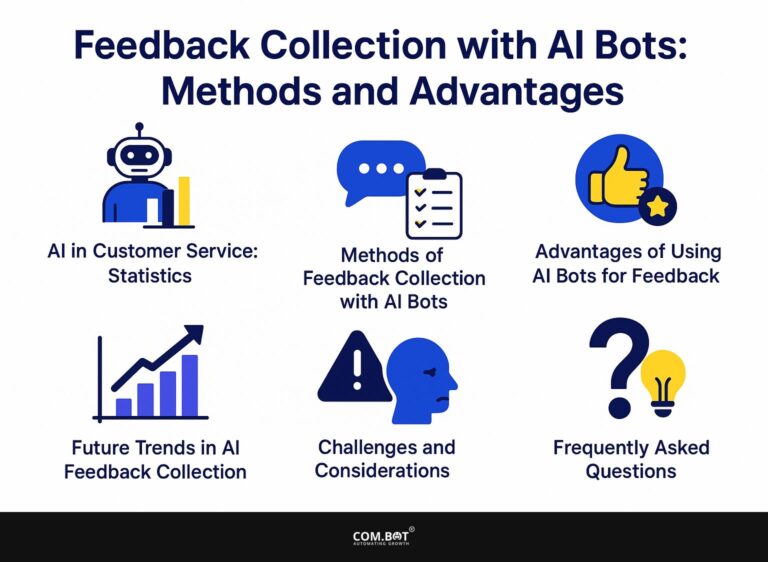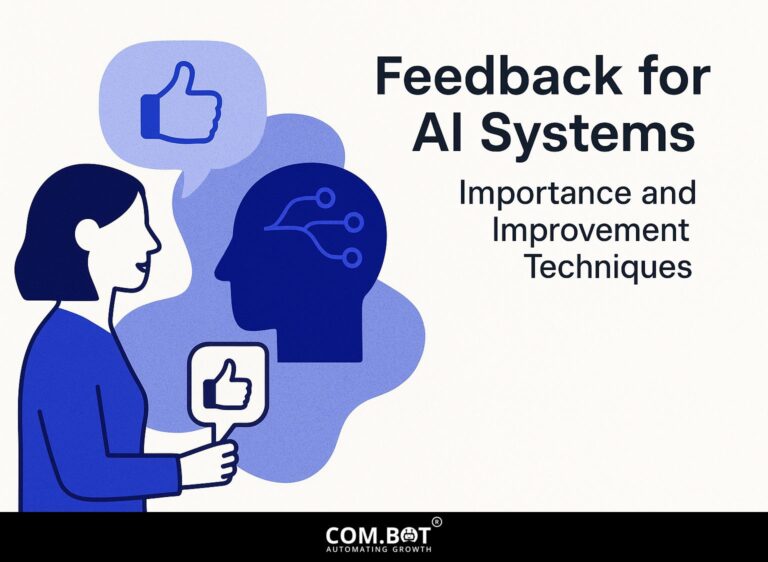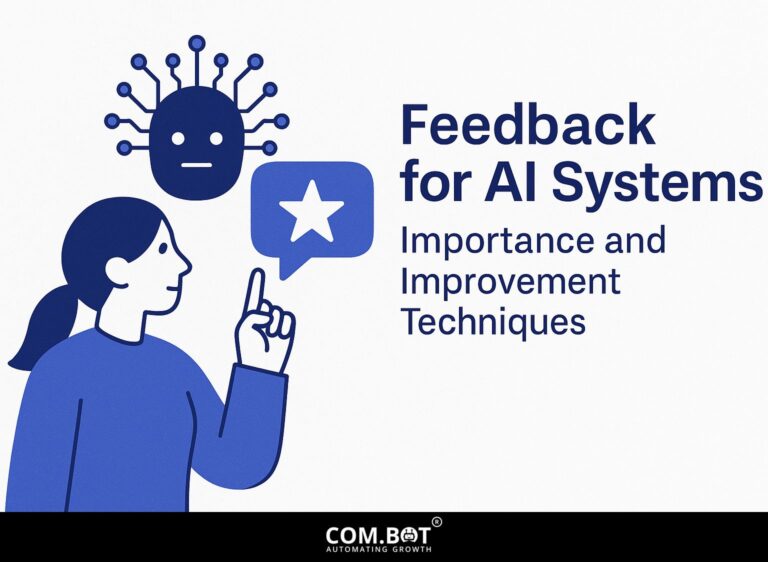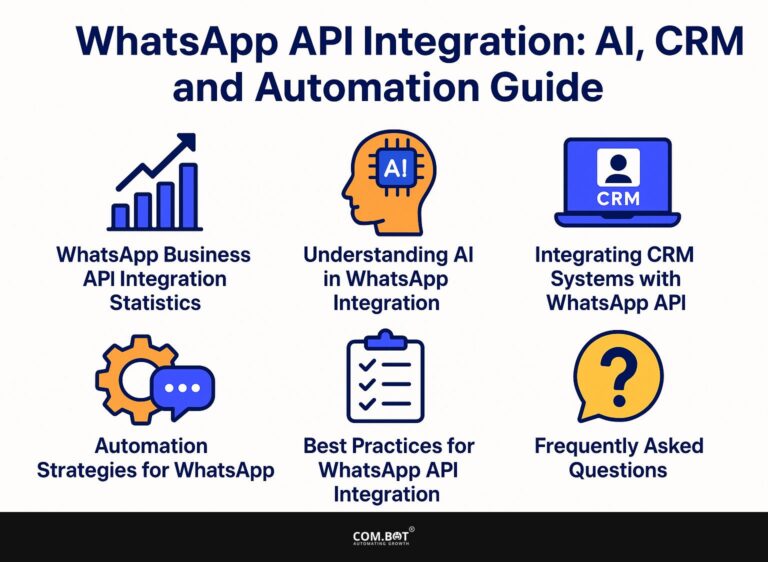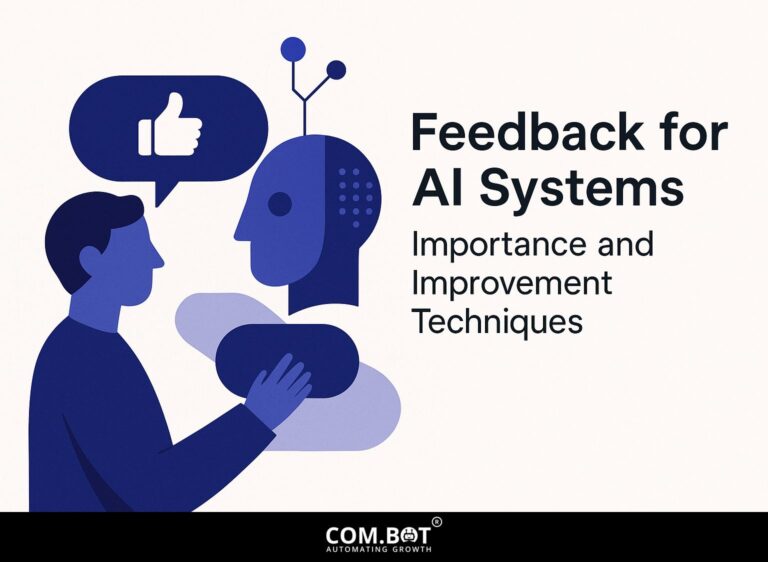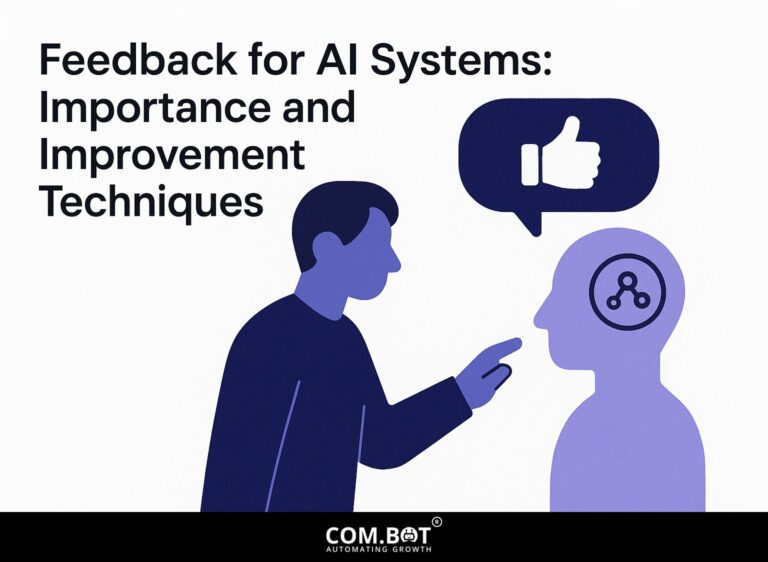Feedback for AI Systems: Importance and Improvement Techniques
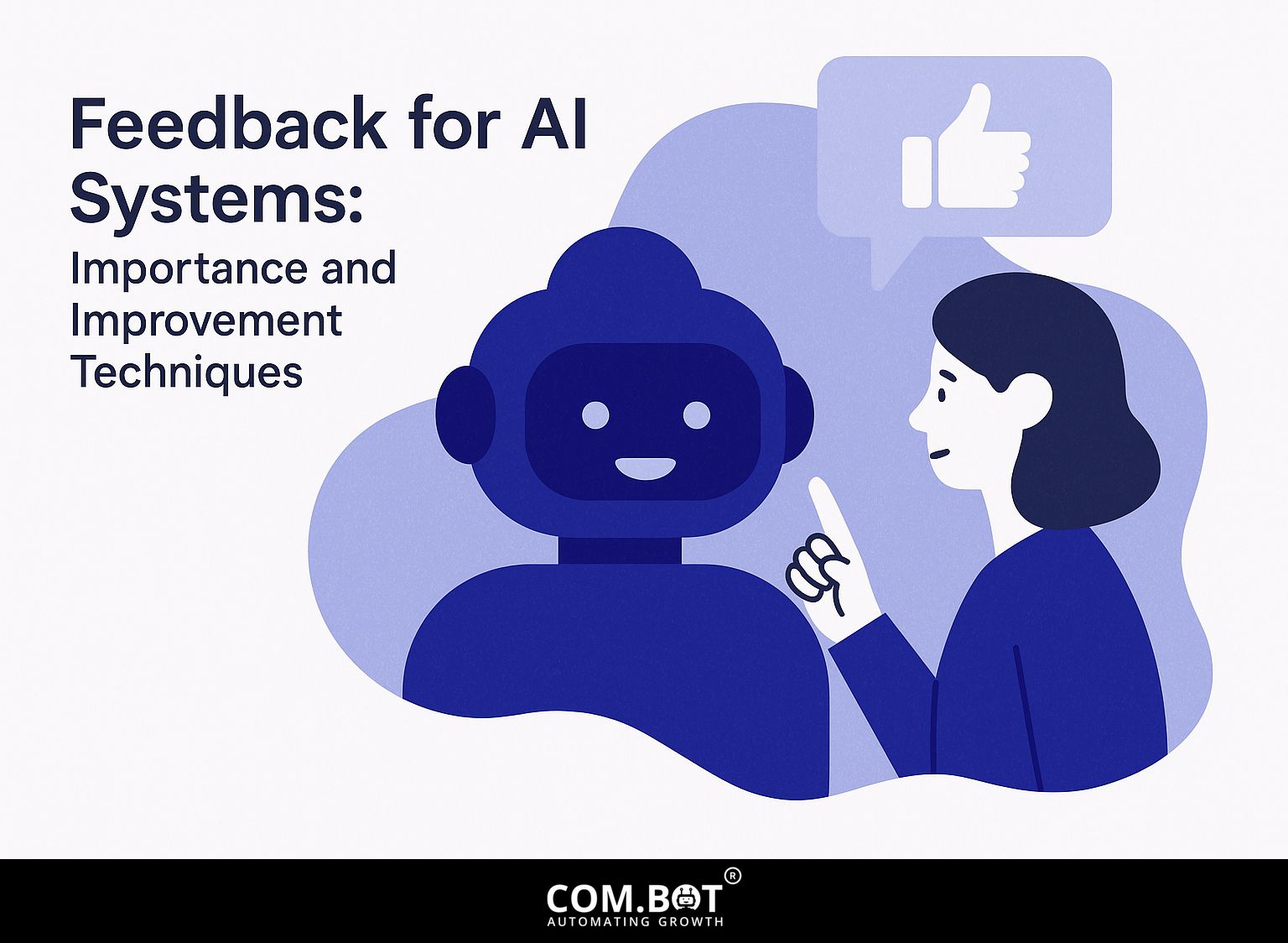
In the fast-changing field of AI systems, keeping track of feedback is important for improving how they work and making decision processes automatic. As artificial intelligence and machine learning technologies progress, knowing how to monitor them well is important to measure how they perform accurately. This article explains how feedback is important in AI, offering practical ways to make your systems better and build trust with users. Learn how to improve your AI’s performance by using effective feedback methods.
Key Takeaways:
- 1 Importance of Feedback
- 2 Types of Feedback
- 3 Feedback Collection Techniques
- 4 Challenges in Implementing Feedback
- 5 AI Feedback Mechanisms and Bias Amplification Statistics
- 6 Best Practices for Effective Feedback
- 7 Future Trends in AI Feedback Systems
- 8 Frequently Asked Questions
- 8.1 What is the importance of feedback for AI systems?
- 8.2 How does feedback improve AI systems?
- 8.3 What are some techniques for improving feedback in AI systems?
- 8.4 Why is it important to have a continuous feedback loop in AI systems?
- 8.5 Can feedback help to overcome biases in AI systems?
- 8.6 How does feedback from human users impact the performance of AI systems?
Definition and Scope
Feedback is the information given to an AI system about how well it is doing, which greatly affects how it learns and changes.
This feedback can come from various sources, such as user interactions or performance metrics, shaping AI outputs in fields like e-commerce and healthcare.
For example, in online shopping, customer feedback on product suggestions can make algorithms better, tailoring recommendations to each person’s likes and increasing sales. In healthcare, AI systems analyze patient response data to improve diagnostic tools.
Using technologies like reinforcement learning, AI keeps improving by learning from feedback. For an extensive analysis of how feedback drives AI development, our in-depth study on feedback for AI systems explores various improvement techniques that enhance decision-making precision and speed in different industries.
Historical Context
The development of feedback systems in AI has moved from simple data entry to advanced reinforcement learning methods that mimic how humans make decisions.
In the past, early AI systems depended on rules and used set algorithms to make decisions. Modern learning systems take advantage of deep learning and reinforcement learning techniques.
For example, Google’s AlphaGo employed advanced reinforcement learning techniques, improving its performance through self-play and analysis of millions of games. In the same way, OpenAI’s GPT models improve through user interactions, adjusting responses based on feedback. (Our guide to AI feedback improvement techniques delves into how these systems evolve.)
These improvements mark a change from basic input-output systems to learning methods that develop on their own, more closely resembling how humans think.
Importance of Feedback
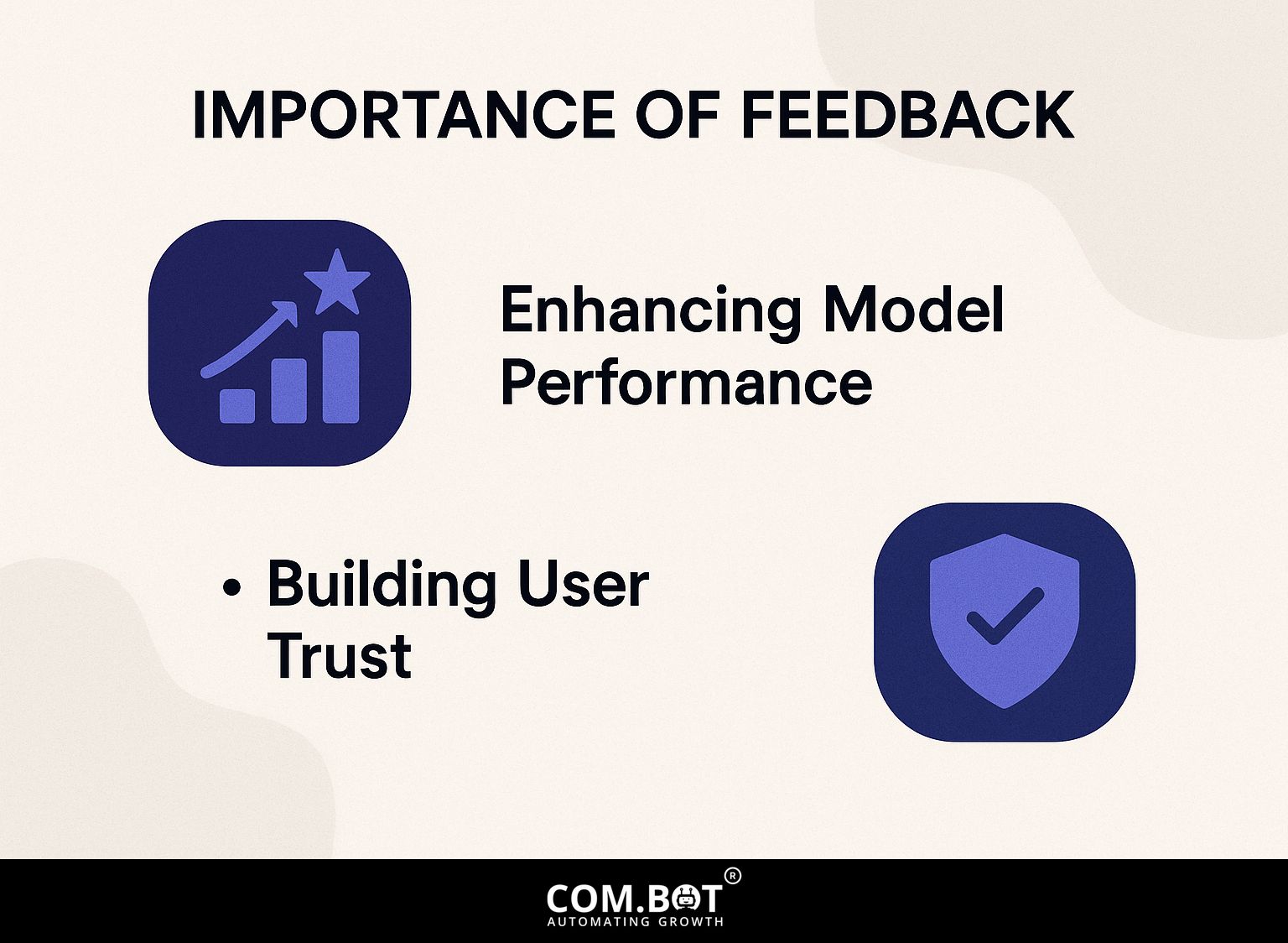
Feedback is extremely important in AI because it is directly linked to how well the model works and how much users trust it, both of which are key for ongoing success. For those looking to enhance their understanding of this topic, our detailed guide on feedback for AI systems offers techniques to further improve AI models.
Enhancing Model Performance
Using organized feedback systems can improve model performance by as much as 70%, based on live user activities and data provided.
Organizations can use Label Studio to gather people’s responses on AI predictions.
Begin by setting up the tool to annotate and evaluate model outputs. Next, use performance measures like accuracy and recall to evaluate its effectiveness. Regularly review feedback to identify patterns or recurring issues.
For example, if a model misclassifies a specific type of input frequently, developers can retrain the model with additional data focused on this area. This repeated process leads to ongoing improvement and makes the model better match what users want.
Building User Trust
Building user trust through transparent feedback processes can increase user engagement by 40%, as seen with platforms that prioritize feedback visibility.
A good way to build trust is by including user feedback cycles in AI systems. For instance, customer service chatbots like Ada and Intercom saw significant improvements in user satisfaction scores after allowing users to rate their interactions and share comments.
Sharing this feedback openly and updating repeatedly makes users feel valued. Doing regular engagement surveys can highlight particular areas for improvement, keeping the trust strong between users and the technology.
Types of Feedback
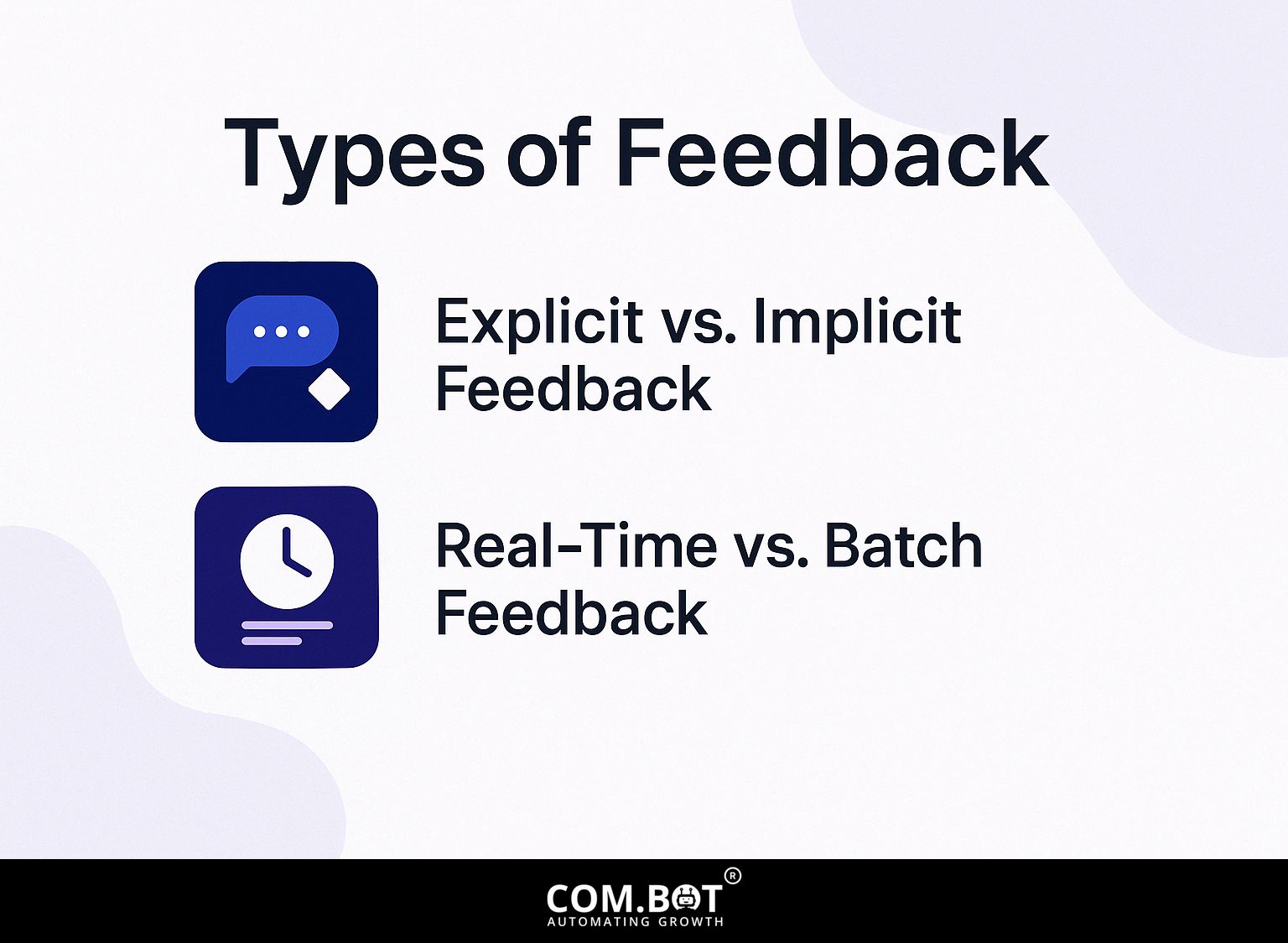
Knowing the different types of feedback-explicit and implicit-helps organizations adjust their AI systems to meet user needs more effectively. Worth exploring: Feedback for AI Systems: Importance and Improvement Techniques which delves into methods to enhance these adjustments.
Explicit vs. Implicit Feedback
User ratings or comments, which are direct forms of feedback, are quite different from feedback that comes from user actions such as clicks and time spent on a page.
Gathering explicit feedback can be effectively achieved through platforms like SurveyMonkey or Typeform, allowing you to design targeted questionnaires.
For implicit feedback, use tools like Google Analytics or Hotjar. These tools track how users interact with your site and show patterns in their behavior. For instance, if a specific page has high bounce rates, it indicates potential issues that need addressing.
Using both types of feedback helps with planning; direct feedback shows what users like, while indirect data shows hidden actions that aren’t obvious right away.
Real-Time vs. Batch Feedback
Real-time feedback allows for immediate adjustments in AI systems, while batch feedback is analyzed periodically, influencing longer-term updates.
In customer service, tools like Hotjar collect immediate feedback through surveys and session recordings, allowing quick changes based on how users interact.
On the other hand, older survey techniques like Google Forms or SurveyMonkey gather feedback in batches, usually evaluated each month to understand product satisfaction over a period.
For instance, while Hotjar captures users’ immediate reactions during a website visit, Google Forms may reveal trends in customer satisfaction, allowing teams to implement strategic changes during quarterly reviews.
Feedback Collection Techniques
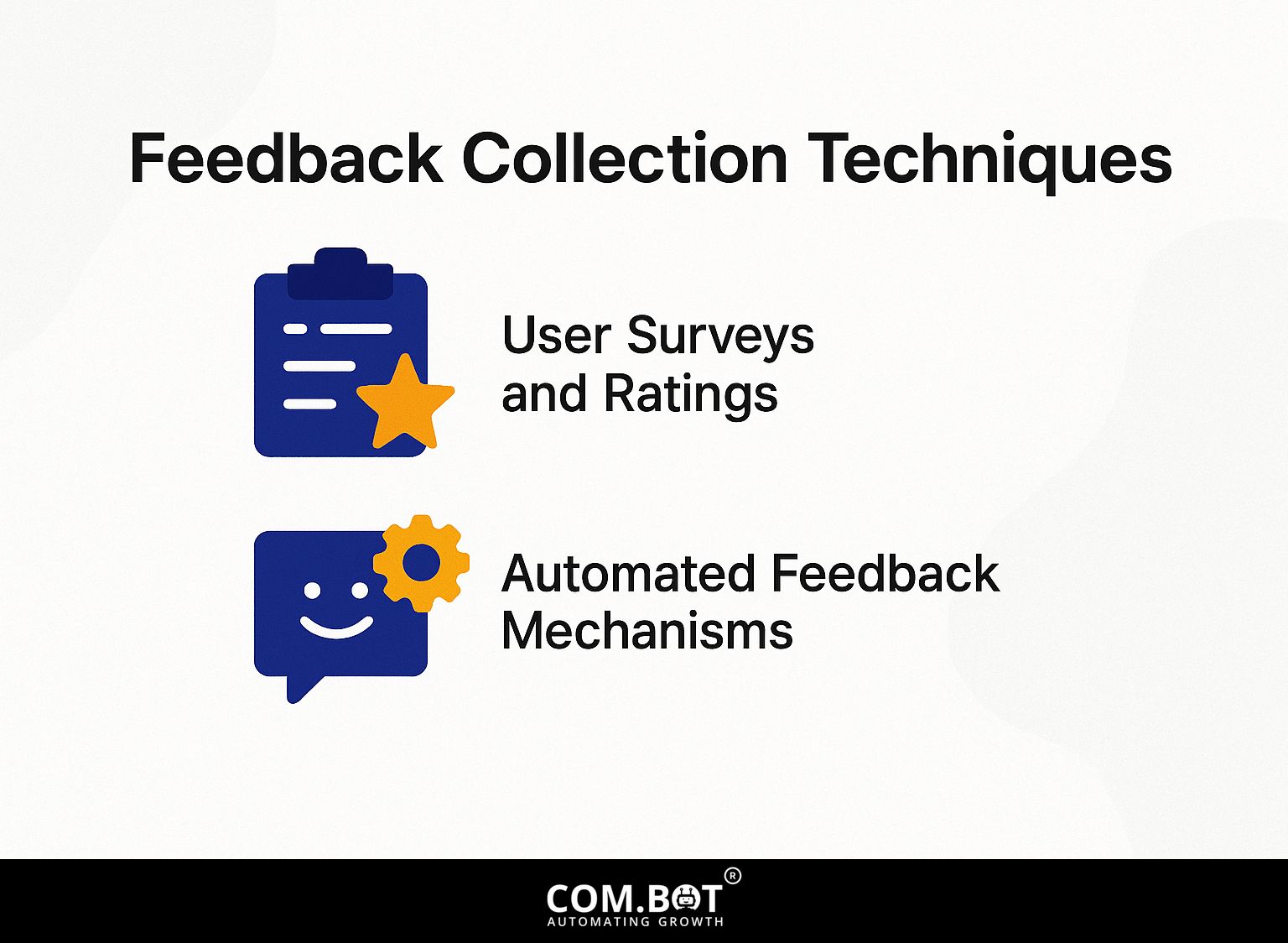
Gathering feedback effectively is important for creating AI systems that respond to what users need and expect.
User Surveys and Ratings
Surveys and ratings from users can give useful information. A carefully prepared survey can increase response rates by more than 50%.
To design effective user surveys, start by defining your objectives clearly. Use different question styles-like multiple choice for numbers and open-ended for detailed feedback.
Tools like Typeform and Google Forms are user-friendly options that allow customization and easy distribution. Keep surveys concise; ideally, limit them to 5-10 questions to respect respondents’ time.
Once you have collected the responses, examine the information using basic analysis tools or spreadsheets to find patterns and useful information. This will help you make informed decisions.
Automated Feedback Mechanisms
Automated feedback systems use AI to gather information quickly, speeding up response times and improving data accuracy.
For example, chatbots like Drift can be added to your website to ask users for feedback right after they interact with it. This tool increases response rates and provides immediate feedback on customer opinions.
Implementing a chatbot typically costs between $40 to $500 per month, depending on the features you choose. Many organizations find it helpful to link these tools with platforms like Zendesk, where they can collect data to fully understand customer opinions.
Working together improves how feedback is gathered.
Challenges in Implementing Feedback
Although feedback systems can be helpful, organizations face big challenges when trying to put them into practice.
AI Feedback Mechanisms and Bias Amplification Statistics
AI Feedback Mechanisms and Bias Amplification Statistics
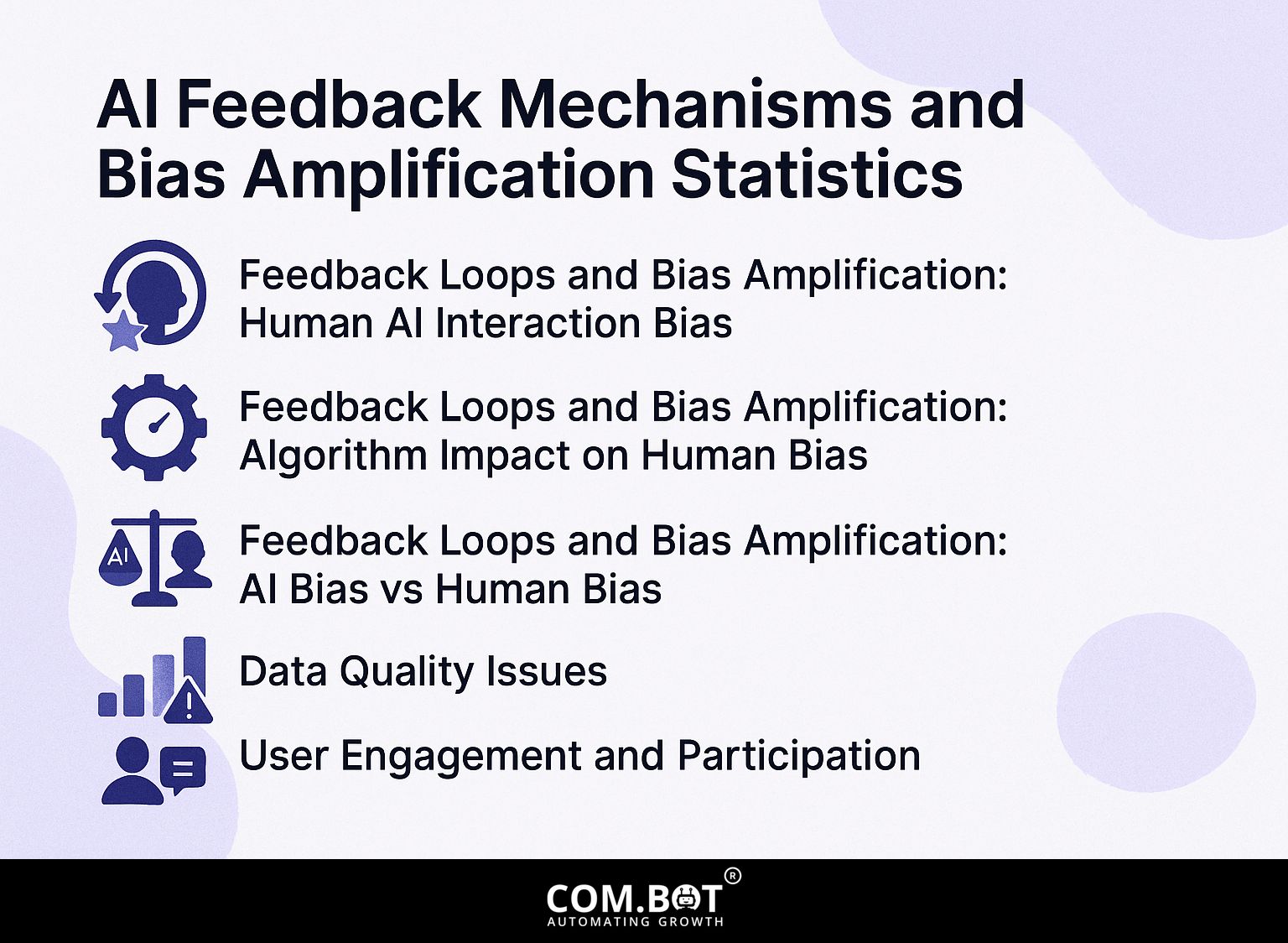
Feedback Loops and Bias Amplification: Human AI Interaction Bias
Feedback Loops and Bias Amplification: Algorithm Impact on Human Bias
Feedback Loops and Bias Amplification: AI Bias vs Human Bias
The AI Feedback Mechanisms and Bias Amplification Statistics give important information about how AI can affect and increase human biases. This data helps us see the problems that can happen when AI and humans collaborate and the risks of increasing bias.
Feedback Loops and Bias Amplification focus on the interaction between humans and AI systems, with particular emphasis on emotion classification and its subsequent effects on bias. The data reveals that initial bias increases by 56.3% following AI interaction, highlighting the significant impact AI can have on exacerbating pre-existing biases.
- Human AI Interaction Bias: The initial bias increase is critical, as it reflects how AI systems can influence human perceptions, particularly when dealing with subjective matters such as emotions.
- Algorithm Impact on Human Bias: AI further amplifies bias by 65.33%, indicating a substantial shift in human perception after interacting with algorithmic systems. This highlights the need for careful design and evaluation of AI systems to prevent unintended bias reinforcement.
- AI Bias vs Human Bias: AI systems classify sad emotions at a rate of 65.33%, compared to the human baseline bias classification of 53.08%. This discrepancy suggests that AI might use different criteria or have inherent biases in emotion classification, which can affect the outcomes and interpretations of AI-human interactions.
Overall, the statistics highlight the need to tackle bias in AI systems to avoid increasing current human biases and to make sure AI interactions are fair and correct. By studying these patterns, developers and researchers can create AI systems that reduce bias and improve ethical standards in AI applications.
Data Quality Issues
High-quality data is essential in feedback systems. If the data is bad, the analysis may be wrong and result in poor choices.
To maintain data quality, start by using data cleaning methods to remove mistakes and inconsistencies. Tools like Talend can handle this task automatically, offering a dependable system for checking data accuracy.
Regular checks help find and reduce bias. For example, a company that used these methods saw a 30% increase in useful information, leading to better customer satisfaction.
Place your checked data into a feedback tool such as SurveyMonkey to keep its quality and dependability consistent.
User Engagement and Participation
When user participation is low, feedback becomes less useful. It’s important to actively encourage users to get involved.
One effective strategy is to use game-like methods, such as giving points for finishing surveys or participating on feedback sites.
For example, Starbucks uses a loyalty program where customers earn stars for providing feedback, enhancing participation. Incentivizing responses through discounts or exclusive access can motivate users to share their thoughts.
A notable case is Dropbox, which saw a significant increase in feedback by offering users extra storage space for completing surveys.
Bringing these methods together can set up an active cycle that collects information and builds a sense of community among users.
Best Practices for Effective Feedback
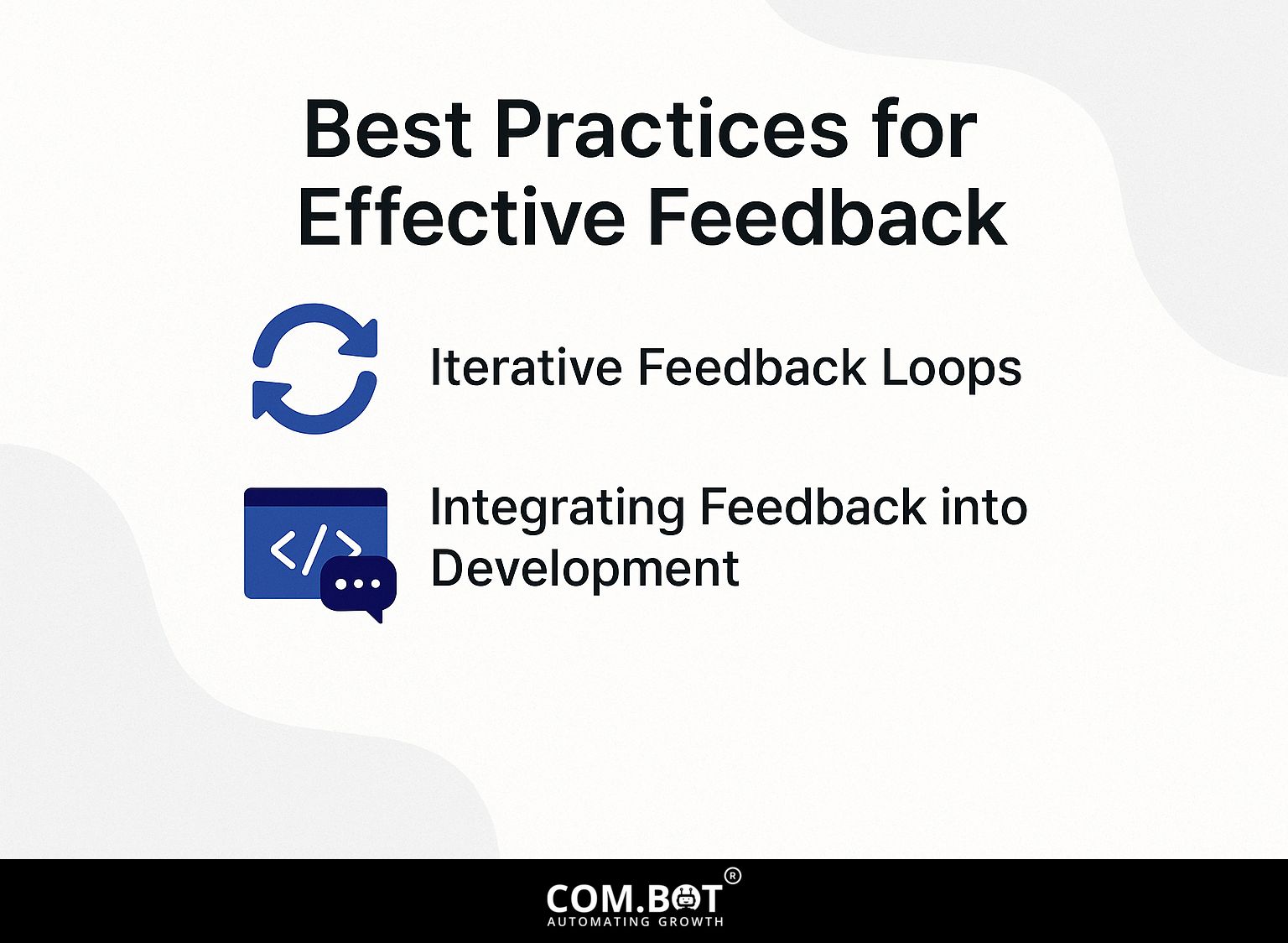
Using the best methods for gathering feedback can greatly improve the quality and usefulness of the information from users.
Iterative Feedback Loops
Creating regular feedback cycles lets organizations change and improve AI systems using ongoing user input.
To set up effective feedback loops, begin by implementing real-time monitoring tools like DataDog or Grafana. These tools let you track user interactions and system performance, which are critical for timely responses.
Next, establish clear channels for user feedback, such as surveys or dedicated support forums. Regularly analyze this feedback to identify trends and make necessary adjustments to your AI models.
Think about having weekly meetings to talk about results and make updates. This structured approach makes sure your AI system grows to meet user needs.
Integrating Feedback into Development
Integrating user feedback into development processes can reduce time-to-market by up to 30%, enhancing product relevance.
To use feedback well, use Agile methods where short work periods let you get constant input from users. Tools such as Jira organize feedback and enable easy access throughout development.
For example, companies like Spotify use this method, collecting user feedback after each release, which guides their next updates. By focusing on what users say, they’ve made users happier and sped up their development process.
Frequently applying this method can turn user feedback into helpful changes, ensuring your product meets market needs.
Future Trends in AI Feedback Systems
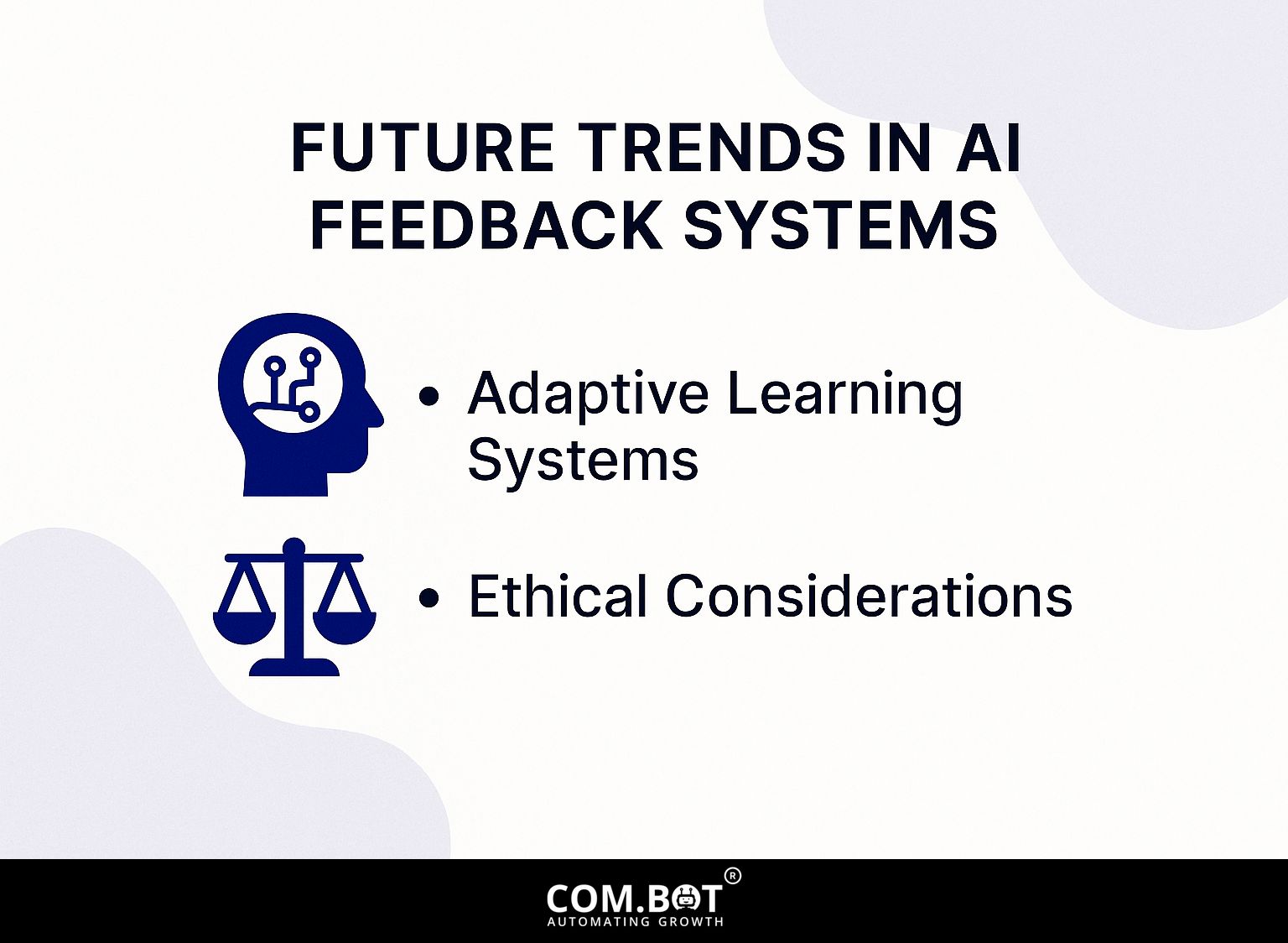
The progress of AI feedback systems depends on creating learning technologies that adjust to users, offering more individualized experiences.
Adaptive Learning Systems
Learning systems use immediate feedback to tailor experiences for users, increasing interest and happiness.
These systems use algorithms to track user performance and adjust content accordingly.
For example, platforms like DreamBox Learning and Knewton change math lessons based on how students answer, giving specific exercises to help fill any learning gaps.
Metrics show that these systems can raise student retention by up to 30% and improve user interaction by 50%, as learners receive immediate feedback and targeted resources.
This keeps users interested and creates a more effective learning environment, leading to better educational results.
Ethical Considerations
As AI technologies evolve, ethical considerations surrounding user privacy and data handling become increasingly critical.
To tackle these problems, organizations should use structures that emphasize ethical AI practices.
Key steps include:
- Obtaining informed consent before data collection
- Ensuring transparency about how user data will be used
- Setting up strong security protocols to keep this data safe
For example, the General Data Protection Regulation (GDPR) offers a helpful guide for following the rules. Engaging in regular audits can help organizations maintain ethical standards. By setting clear rules for data management, businesses can build trust and use AI responsibly.
Frequently Asked Questions
What is the importance of feedback for AI systems?
Feedback is important for AI systems because it helps them get better and learn from their errors. It helps find and fix mistakes, resulting in better and faster performance.
How does feedback improve AI systems?
Feedback gives AI systems important data, helping them change their algorithms to make better predictions. It helps them get used to new situations and scenarios, making them better at dealing with difficult tasks.
What are some techniques for improving feedback in AI systems?
Some techniques for improving feedback in AI systems include using diverse and representative training data, implementing regular updates and retraining, and incorporating human oversight to provide necessary feedback and corrections.
Why is it important to have a continuous feedback loop in AI systems?
Regular feedback helps AI systems improve their learning and performance, making them more accurate and effective. It also helps to detect and correct any biased or incorrect data, ensuring the system’s outputs are fair and ethical.
Can feedback help to overcome biases in AI systems?
Yes, feedback is important for finding and fixing biases in AI systems. AI systems can become more fair and impartial in their decisions by regularly getting feedback and making needed changes.
How does feedback from human users impact the performance of AI systems?
Feedback from human users is very important for AI systems because it offers practical information and comments on how they work. It can help find places that need improvement and direct the system to make better and quicker decisions.
